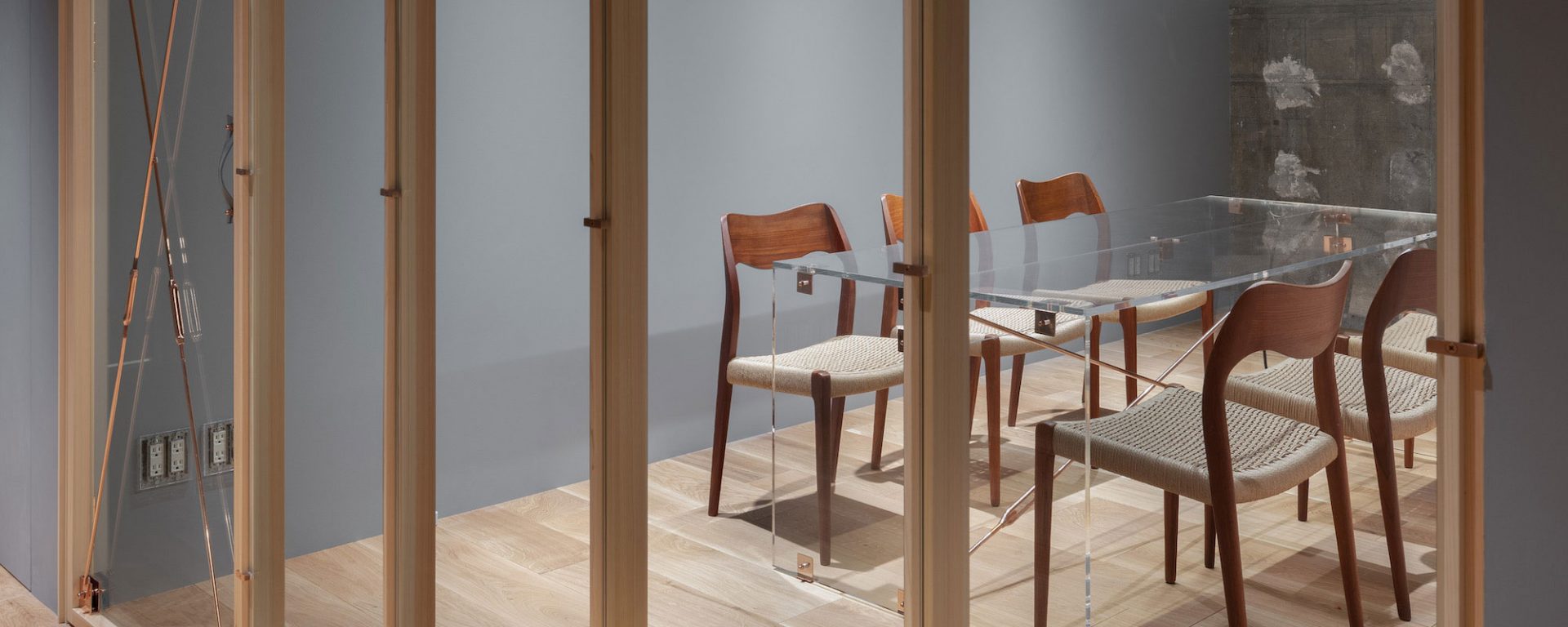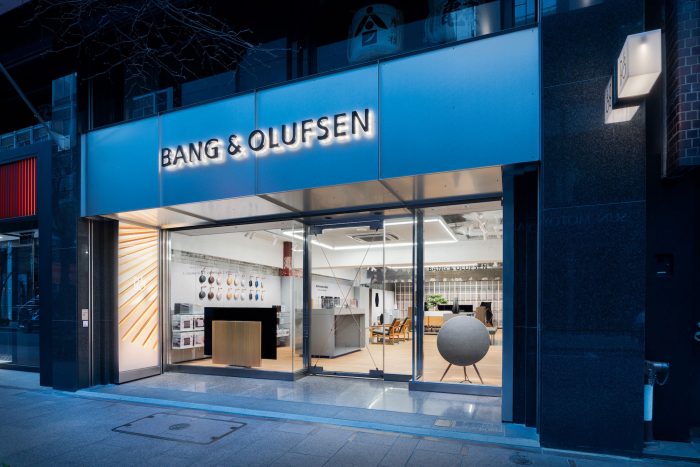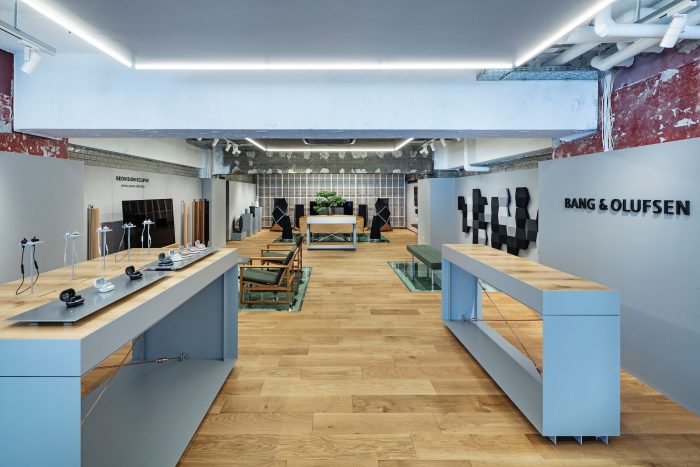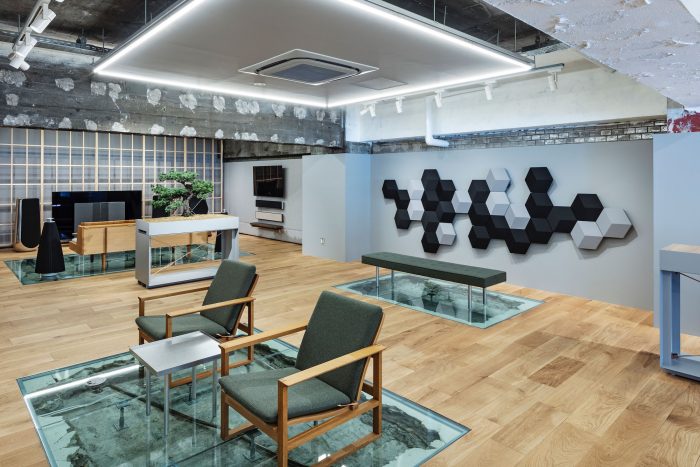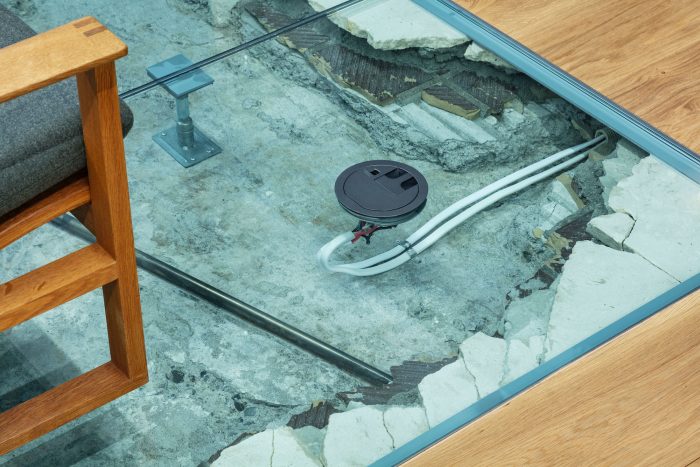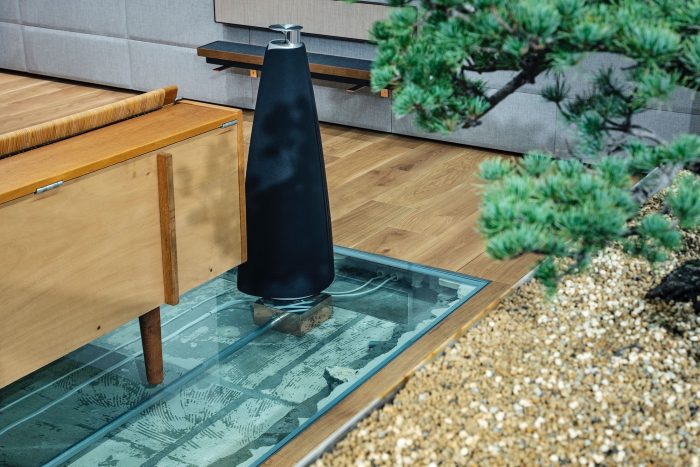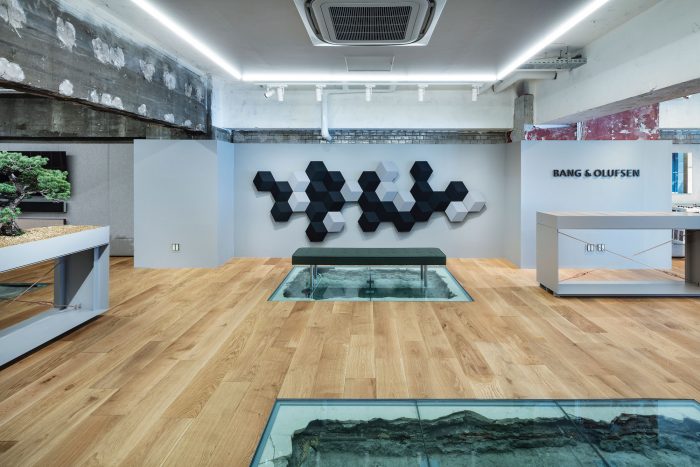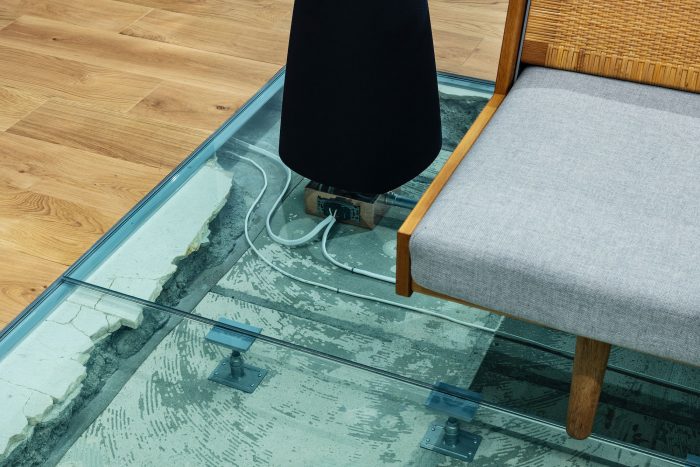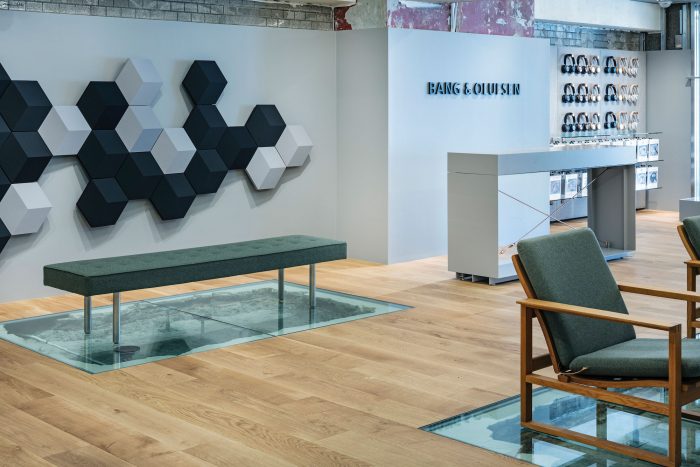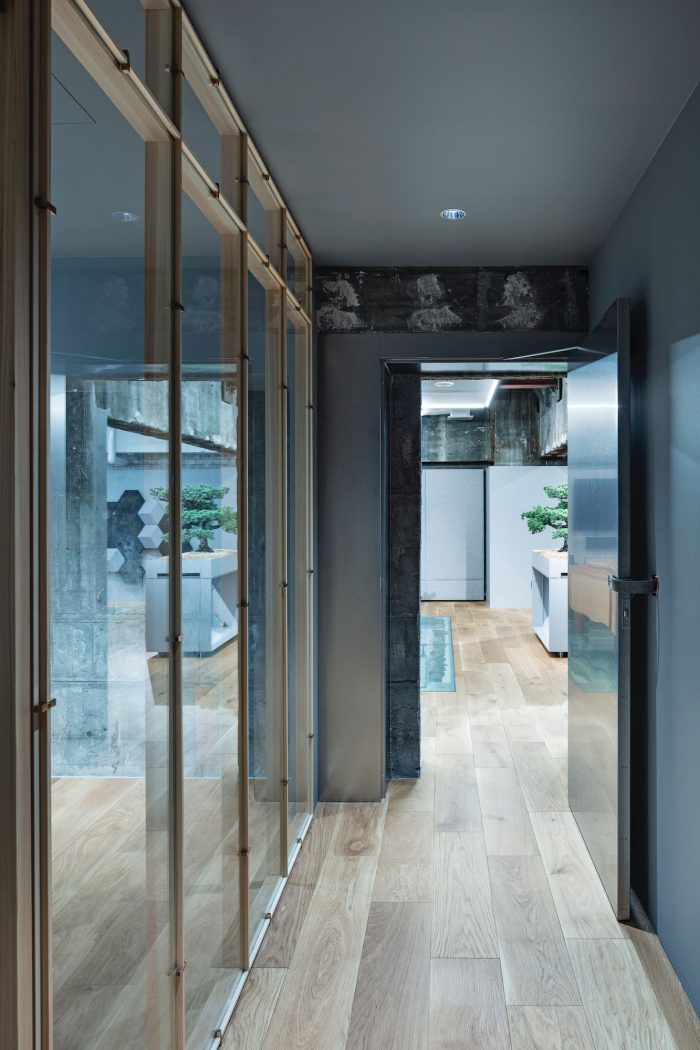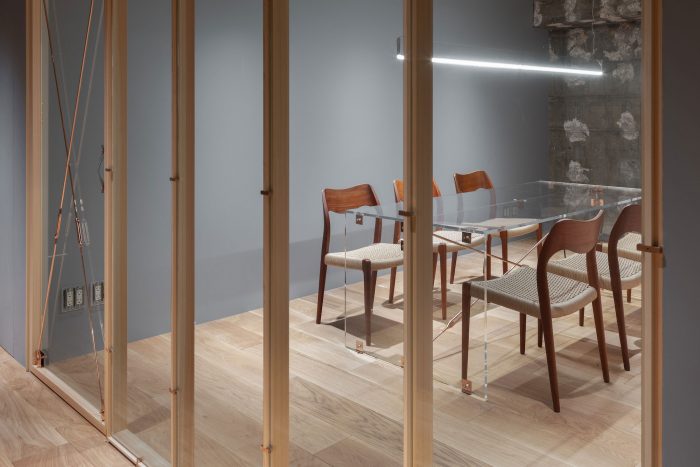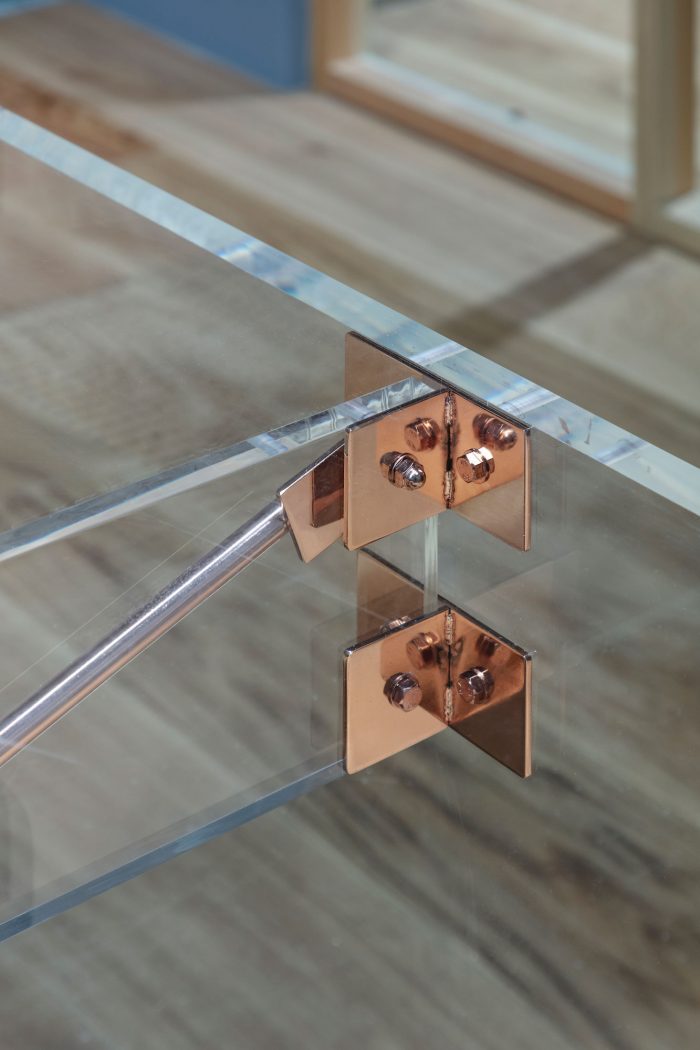于1925年在丹麦成立的影音品牌Bang&Olufsen旗舰店的设计,该场所位于东京银座的Namiki-Dori街,建于1960年,计划在两年内拆除。不仅要让用户自己体验产品,还需要让用户在一个类似客厅的空间中模拟自己的生活的设计;我们还旨在创造一个融合东京风情与丹麦风情和优雅工艺的空间B&O的品牌设计团队要求了基本的布局计划。这家商店的必要功能是将产品排列成一个类似客厅的空间,一个会议室和一个后院。
为了表达对B&O的品牌宗旨的认可,“创造永恒的独特产品,挑战传统并激发想象力”,DDAA提出了一个空间,在此空间中,丹麦和东京文化,最新产品和手工艺以及古董家具和现代设计之间可以实现共性和对比。我们按照品牌设计团队的要求进行布局,但我们没有铺设地毯,而是拆除了地板,放下了扬声器的接线,并用玻璃覆盖了建筑物的装修历史,自建成以来一直被覆盖。通常隐藏在墙壁或地板内的电缆都经过仔细的布线,就像在玻璃柜中展示的那样。在玻璃地毯上铺有与建筑物竣工时间相同的丹麦老式家具。
商店中的老式家具和现代设计形成鲜明对比。
丹麦和日本的木工文化都源于其手工艺,这家商店的中心摆放了一棵约60年历史的盆景树,这棵树进一步象征着老式家具和建筑的环境。空间是历史背景,也是基于工艺的“细节”。您
可以在玻璃地毯下面看到扬声器的接线;在横撑上使用了铜镀层,支撑入口门的结构和盆景家具;在将玻璃固定到位的硬件上。会议室的桌子是用透明的丙烯酸制成的,除了接缝,镀铜的是唯一可见的元素。
Design for the flagship store of Bang & Olufsen, an audio-visual brand founded in 1925 in Denmark. The site, located on Namiki-Dori Street in Ginza, Tokyo, is a building completed in 1960 and scheduled to be demolished in two years. It was required to design that would allow users to simulate their own lives in a living room-like space, rather than just experiencing the products themselves. We also aimed to create a space that fuses Tokyo-ness with Danish-ness and the elegant craftsmanship of B&O. The basic layout plan was requested by the brand design team at B&O. The necessary functions of this store are a living room-like space where products are lined up, a meeting room, and a backyard.
In a nod to B&O’s brand purpose “create timelessly distinctive products that challenge conventions and engage imaginations”, DDAA proposed a space where commonalities and contrasts between the culture of Denmark and Tokyo, the latest products and craftsmanship, and vintage furniture and contemporary design can can live together. We kept the layout requested by the brand’s design team, but instead of laying rugs, we dismantled the floor, placed wirings for the speakers and covered them with glass. The building’s renovation history, which has been overwritten since its completion, is visualized like a stratum. Cables, usually hidden inside walls or floors, are carefully wired as if they were on display in a glass case. This glass rug is topped with vintage Danish furniture produced in the same period as the building’s completion year.
Vintage furniture and contemporary design contrast in the store.
Both Denmark and Japan have a culture of woodworking that is rooted in their craftsmanship. A bonsai tree about 60 years old, which further symbolizes the context of the vintage furniture and building, was placed in the center of this store. What is visualized in this space is the historical background and also the “details” based on the craftsmanship.
You can see the speaker wiring under the glass rugs. Copper plating was used on the cross braces supporting the structure of the entrance door and the furniture for the bonsai, and on the hardware holding the glass in place. The table in the meeting room is made of transparent acrylic except for the joints, copper plated in order to be the only element visible.
Client: BANG & OLUFSEN
Location: Chuo-ku, Tokyo
Usage: Retail
Architects: DDAA
Project Team: Daisuke Motogi / Kazuya Sumida
Construction: Murayama inc.
Furniture production: E&Y / Kogazo
Planting: Qusamura
Total floor area: 162.38m²
Date of completion: December / 2019
Photo: Tomooki Kengaku / Kenta Hasegawa

